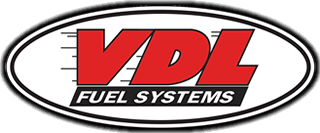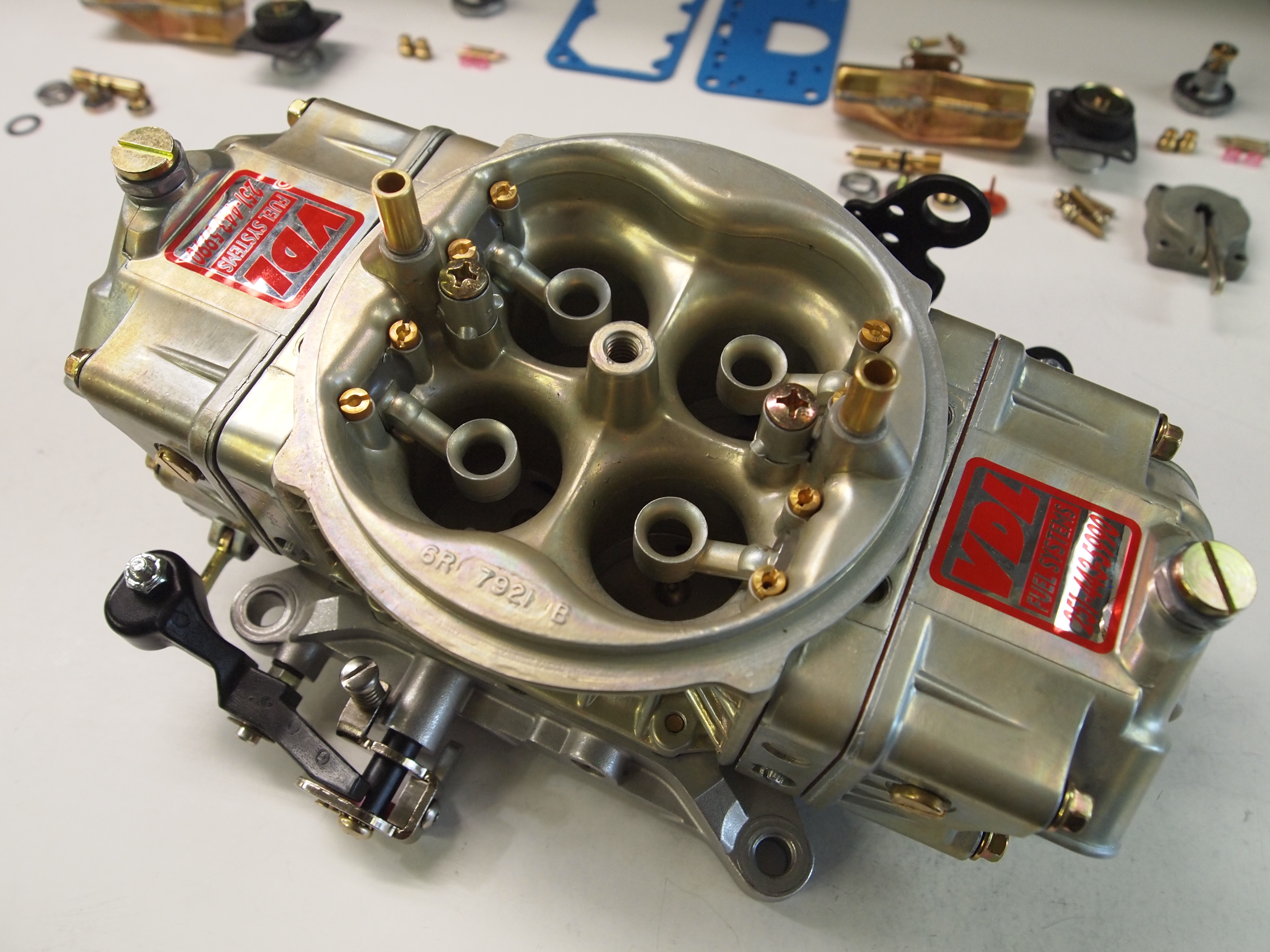This carburetor is probably the most “friendly” carburetor available for the small block application. Very capable of sufficiently feeding an engine up to 650 horsepower, this carburetor still retains the capability of good low-end response due to proper air speed.
VDL Fuel Systems has done extensive dyno testing to establish the proper air/fuel circuitry producing a flat fuel curve that results in maximum torque and horsepower while maintaining good horsepower numbers in the high RPM range. Most racing carburetors can be jetted to produce big torque numbers or big top end horsepower numbers, but there is always a trade off between the two. VDL Fuel Systems carburetors have a balanced network of metering systems that produce a superior performance curve from start to finish.
Track testing has given VDL Fuel Systems an extensive database for producing optimum throttle response and drivability in specific applications. This is a custom tailored carburetor, not just an “out of the box” generic, and you will notice the difference!
Assembly is done to tolerances unobtainable in high volume production. Boosters are installed to within .001’’ on height, twist, and pitch. The base plate is matched to the main body. All gaskets are properly matched to the main body to prevent overhang. And, finally, the throttle plates are adjusted for optimum position angle on the flow bench. VDL Fuel Systems produces a custom built, fully optimized carburetor built to your specifications and engine application – not just another ‘’out of the box’’ carburetor.
Application: Holley 80528 $1200
All Aluminum – Same great VDL performance, still gauge legal, but weighs only 6.75#
- Venturis blueprinted to maximum sizing
- Air/fuel circuitry calibrated
- Idle circuit calibrated
- Accelerator pump circuit tailored to application
- Welded throttle shaft
- Base plate matched to main body
- Boosters calibrated, sized, and precision installed
- All parts vibratory polished for enhanced airflow
- Sight glass in bowls
- Also offered with billet base plate and thinned nickel shafts $1300
Application: Holley 3310 vacuum secondary $1200
- Venturis blueprinted to maximum sizing
- Air/fuel circuitry calibrated
- Idle circuit calibrated
- Accelerator pump circuit tailored to application
- Welded throttle shaft
- Base plate matched to main body
- Boosters calibrated, sized, and precision installed
- All parts vibratory polished for enhanced airflow
Application: Holley 80528 on alcohol $1400
- Built with the same precision as the 750 HP gas carburetor
- Billet metering blocks
- Billet base plate
- Thinned nickel throttle shafts and stainless blades
- All systems calibrated for methanol
TUNING TIPS FOR YOUR 750 CARBURETOR
Float Level – The fuel level in the bowls should be set at the bottom of the sight hole so that you have to jostle the car to get the fuel to come out the sight hole when running. With the aluminum carburetor with a sight glass in each bowl, the fuel line should cross the sight glass at the midline. We set the floats to a particular setting on the bench during assembly; but fuel pressure dictates fuel level. Therefore you must set this when you first install the carburetor. Finally, after setting the floats, always give the carburetor time to burn off enough fuel to reopen the needle/seat so that your new setting is really what you are seeing. Many times people lower the floats too much because they haven’t waited a sufficient amount of time for the fuel to burn off and the new setting to take.
Throttle Blade Adjustment – The throttle blades should be set at an rpm that is as low as possible to keep the transfer slots covered at closed throttle position. Keep the primary and secondary throttle blades adjusted equally. If you should lose your setting just back it completely off, put 1 round in the primary and 1 round in the secondary and start there.
Idle Mixture Screws – Always adjust the 4 idle mixture screws evenly. The settings on all 4 should be the same. Our original setting is 1 1/2 turns out. If for some reason your engine absolutely needs a different setting on one side or corner you can just about bet something is wrong with the engine causing it to have a different signal/vacuum on that side/corner.
Fuel Pressure – 6 to 7 pounds. You should absolutely know what your fuel pressure is! Many racers have no clue what their fuel pressure is, and they chase engine problems for weeks when a simple fuel pressure gauge would have indicated the problem straight away.
Vent Tube Clearance – You must have at least ¾” clearance above the vent tubes. It is ok to lower the vent tubes if absolutely necessary, but you will begin to run the risk of fuel spilling over in the turns if you are not careful.
Pump Circuit Tuning – Because of the differences in track conditions and driving styles you may need to adjust the pump circuit, i.e. pump cam/pump arm, to correct “off corner” stumbling issues. If an engine stumbles two or three times after the driver steps into the throttle this usually indicates too much fuel and can be corrected by adjusting slack in the pump arm or installing a smaller pump cam. If an engine has a “dead hesitation” and then picks right up and goes, this usually indicates not enough fuel on the pump circuit. First confirm that the pump arms have no slack in the adjustment, then proceed to increase pump shot with either a larger pump cam or a larger pump nozzle.


